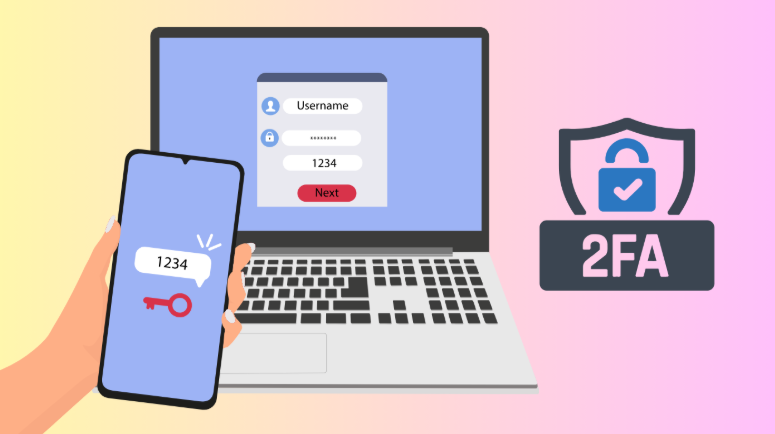
Some of the Best Practices to Keep Your Business Safe with Two-Factor Authentication
Cybersecurity threats are evolving at an alarming rate, making traditional password protection insufficient for business security. Two-factor authentication (2FA) has emerged as a critical defense mechanism that can reduce security breaches by up to 99.9%.
Whether you’re dealing with persistent issues like an Amazon account that keeps getting hacked or protecting sensitive business data, implementing robust 2FA practices is no longer optional; it’s essential for survival. This comprehensive guide reveals proven strategies that leading organizations use to fortify their digital defenses.
You’ll discover how to choose the most secure authentication methods, overcome common implementation challenges, and create policies that balance security with user experience. Most importantly, you’ll learn the advanced techniques that go beyond basic 2FA to create an impenetrable security framework.
Understanding Two-Factor Authentication Fundamentals
Two-Factor Authentication (2FA) is a simple yet powerful security method that adds a critical second layer of defense to your logins. By combining something you know with something you have or are, 2FA drastically reduces the risk of unauthorized access, even if your password is stolen.
What is Two-Factor Authentication?
Two-factor authentication is a security process that requires users to provide two different authentication factors to verify their identity. This multi-layered approach ensures that even if one factor is compromised, unauthorized access remains blocked.
The authentication process typically involves something you know (password), something you have (phone or token), or something you are (biometric data). This combination creates a robust security barrier that’s exponentially harder for cybercriminals to breach.
See also:: Turn Your Presentations into Powerful Storytelling Journeys
How 2FA Works in Practice?
When a user attempts to log in, they first enter their username and password. Once verified, the system prompts for a second authentication factor, which could be a one-time code, push notification, or biometric verification.
The system only grants access after both factors are successfully authenticated. This process ensures that even if hackers obtain login credentials through phishing or data breaches, they cannot access accounts without the second factor.
Types of Two-Factor Authentication Methods
SMS-based verification sends one-time codes to registered phone numbers, though this method has security limitations. Authenticator apps like Google Authenticator or Microsoft Authenticator generate time-based codes that are more secure than SMS.
Hardware tokens provide the highest security level by generating codes offline. Biometric authentication uses fingerprints, facial recognition, or voice patterns as the second factor, offering convenience and security.
Benefits of Implementing 2FA
Organizations implementing 2FA experience significantly reduced fraud and data breach incidents. The additional security layer makes it exponentially more difficult for attackers to gain unauthorized access, even with compromised credentials.
2FA also helps businesses maintain regulatory compliance with standards like PCI DSS and GDPR. Many industries now mandate multi-factor authentication for accessing sensitive data, making 2FA implementation essential for legal compliance.
Essential Implementation Strategies
To build a truly secure authentication framework, it’s not enough to simply enable two-factor authentication (2FA); you need to implement it strategically.
Enable 2FA for All Users Without Exceptions
Universal 2FA deployment is crucial for maintaining consistent security across your organization. Some companies make the mistake of implementing 2FA only for specific departments or user groups, creating security gaps that attackers can exploit.
Every user account, from entry-level employees to executives, should have 2FA enabled. This comprehensive approach ensures there are no weak links in your security chain that cybercriminals can target.
Choose the Right Authentication Methods
Avoid SMS-based 2FA for sensitive applications due to vulnerability to SIM swapping and interception attacks. Instead, prioritize authenticator apps or hardware security keys for maximum protection.
WebAuthn/U2F security keys offer the highest level of security and should be mandated for accessing critical business systems. These hardware devices are nearly impossible to compromise remotely and provide an excellent user experience.
Implement Adaptive Authentication Policies
Adaptive MFA policies allow different authentication requirements based on risk factors like location, device, and user behavior. This approach balances security with user convenience by adjusting authentication requirements dynamically.
Configure policies that require stronger authentication for high-risk scenarios, such as accessing sensitive data or logging in from unfamiliar locations. This intelligent approach reduces user friction while maintaining robust security.
Integrate 2FA with Single Sign-On (SSO)
Combining 2FA with SSO streamlines the user experience while maintaining security. Users authenticate once with 2FA and gain access to multiple applications without repeated authentication prompts.
This integration reduces password fatigue and improves productivity while ensuring consistent security across all business applications. SSO with 2FA creates a seamless yet secure authentication experience.
Advanced Security Measures
To stay ahead of evolving cyber threats, it’s crucial to go beyond basic defenses. Advanced security measures like Zero Trust Architecture, biometric app protection, and robust recovery protocols offer a multi-layered shield against breaches.
Implement Zero Trust Architecture
Zero Trust principles assume no user or device is inherently trustworthy, requiring continuous verification. This approach works perfectly with 2FA if you are concerned that your Amazon account keeps getting hacked by ensuring every access request is authenticated and authorized.
Combine 2FA with network segmentation and continuous monitoring to create a comprehensive security framework. This layered approach provides multiple barriers against potential security breaches.
Use Biometric Locks on Authenticator Apps
Biometric protection for authenticator apps adds another security layer by requiring fingerprint or facial recognition to access authentication codes. This prevents unauthorized use even if someone gains physical access to the device.
Enable biometric locks on all mobile authenticator applications to ensure codes remain secure even if devices are lost or stolen. This additional protection is particularly important for business environments.
Establish Account Recovery Procedures
Robust recovery options are essential for maintaining business continuity when users lose access to their authentication devices. Implement multiple recovery methods like backup codes, alternative contact methods, or administrator override procedures.
Plan recovery procedures that balance security with accessibility. Consider scenarios where employees might lose phones or change devices, ensuring business operations can continue without compromising security.
Monitor and Audit Authentication Activities
Continuous monitoring of authentication attempts helps identify suspicious activities and potential security threats. Implement logging systems that track failed authentication attempts and unusual login patterns.
Regular security audits should review 2FA implementation effectiveness and identify areas for improvement. This proactive approach helps maintain an optimal security posture and prevents potential vulnerabilities.
Frequently Asked Questions
What happens if employees lose their 2FA devices?
Device loss procedures should include immediate notification to IT administrators and temporary access through alternative authentication methods. Maintain backup authentication options like recovery codes or alternative contact methods to ensure business continuity.
Implement device management policies that require immediate reporting of lost or stolen devices. This quick response helps prevent unauthorized access and maintains security integrity.
How does 2FA protect against common cyber threats?
2FA effectiveness against threats like phishing, credential stuffing, and brute force attacks is substantial. Even if attackers obtain passwords through these methods, they cannot access accounts without the second authentication factor.
However, 2FA is not foolproof against all attacks. Advanced persistent threats and social engineering attacks may still pose risks, making comprehensive security awareness training essential alongside 2FA implementation.
Can 2FA be bypassed by sophisticated attackers?
Advanced attack methods like SIM swapping, malware, and social engineering can potentially bypass certain 2FA implementations. This is why choosing secure authentication methods and implementing comprehensive security measures is crucial.
Hardware security keys and authenticator apps provide better protection than SMS-based 2FA. Combining 2FA with other security measures like network monitoring and user behavior analysis creates multiple defensive layers.
Securing Your Business Future with 2FA
Implementing comprehensive two-factor authentication is no longer optional for businesses serious about cybersecurity. The strategies outlined in this guide provide a roadmap for creating robust authentication systems that protect against evolving cyber threats.
Whether you’re addressing specific security concerns like an Amazon account that keeps getting hacked or building enterprise-wide security infrastructure, 2FA serves as a critical foundation for digital protection.
By following these best practices, you can create a security framework that protects valuable assets while maintaining operational efficiency. The investment in proper 2FA implementation today will pay dividends in preventing security incidents and maintaining business continuity tomorrow.




